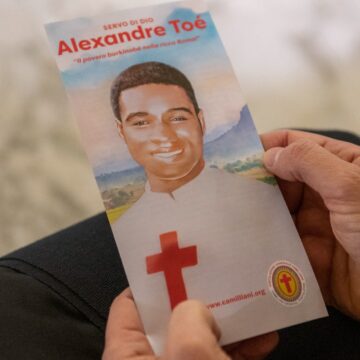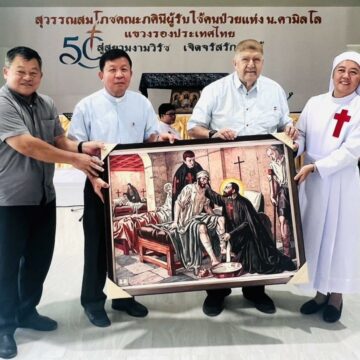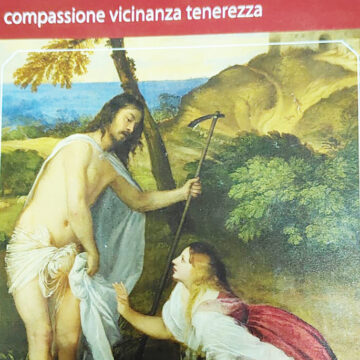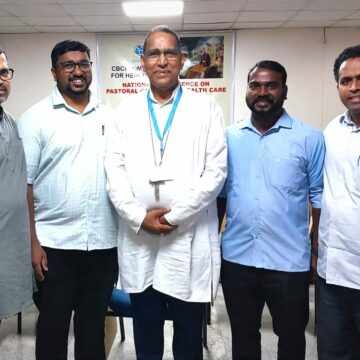
La Camillian Task Force nel Corno D’Africa in aiuto dei rifugiati
La Camillian Task Force (CTF), a metà agosto, ha inviato un Team alla volta del Corno D’Africa per studiare sul posto la fattibilità di un progetto di aiuti contro la carestia che sta colpendo milioni di africani, costringendone molti a diventare profughi.
Quello che segue è un estratto delle prime informazioni raccolte dal Team, cui seguirà il piano di intervento dettagliato, in via di definizione.
In questa fase, CTF ha potuto contare sull’aiuto concreto di tanti benefattori, spesso anonimi. È questa un’occasione per ringraziarli e per assicurare loro la nostra gratitudine e ricordo.
Corno d’Africa: La missione di soccorso è appena iniziata!
(redatto da Anita Ennis, FCL)
Il team della CTF è ormai entrato nel pieno del lavoro della valutazione . Fratel Joseph, Camilliano , Suor Benedictine, delle Ministre degli Infermi e Anita Ennis della Famiglia Camilliana Laica irlandese, hanno raggiunto dopo un lungo viaggio Garissa ed in particolare la zona di Dadaab dove è stato concentrato il maggior numero dei profughi in fuga dalla Somalia.
La visita dei 4 grandi campi profughi a Dadaab ( Ifo, Dagahaley, Hagadeiro e Kambios) che ospitano centinaia di migliaia di rifugiati ha caratterizzato la prima parte del lavoro del team. E’ difficile descrivere quanto sta accadendo nei campi organizzati, caratterizzati da condizioni di grande precarietà. Tuttavia, il vero problema è quello che succede fuori. Il team della CTF testimonia lunghe file di persone fuori dai campi . Centinaia di persone in attesa di essere accolte. Senza cibo, vestiti miseramente, con le poche vettovaglie rimaste loro.
Sembra non esserci malnutrizione grave nei campi né intorno, poiché la gente appena attraversato il confine trova un aiuto che essenziale per la sopravvivenza.
Il team della CTF ha avuto modo di verificare che esistono tensioni fra la popolazione locale e i profughi accolti nei campi . La popolazione della zona infatti è al centro di una situazione di povertà endemica, e soffre la fame e la sete come i rifugiati che sono in fuga dalla Somalia. In più, molti dei locali accolgono parenti in fuga dal territorio somalo, aggravando la situazione familiare.
Un ulteriore elemento di complessità è il risentimento della popolazione locale, che si sente discriminata nella distribuzione degli aiuti, dati in prevalenza ai profughi somali: al punto che alcuni dei locali si “spacciano” per profughi in cerca d’aiuto. Infine, la relazione con il mondo islamico, pone ulteriori sfide: per evitare problemi legati alla sensibilità della popolazione locale, le Ministre degli Infermi sono state invitate a vestirsi in maniera da non rivelare l’identità né a ostentare simboli cristiani.
La prossima tappa della missione sarà a Wajir dove le Ministre degli Infermi hanno una Comunità che già ha accoglie centinaia di bambini e che probabilmente sarà la base di partenza per il lavoro di emergenza.

THE MISSION HAS JUST BEGUN – Horn of Africa
(by Anita Ennis, LCF)
NAIROBI – Three members of the Assessment Team (ATeam), Bro. Joseph Niri, MI, Sr. Bernadette, CS and Ms. Anita Ennis (LCF) arrived in Nairobi last August 17. They were welcomed by Fr. James Wanjau, MI and Sr. Catherine, CS. They were sent by the CTF Central to conduct assessment of needs of the Somalian refugees in the Diocese of Garissa, where the biggest refugee camps are situated in the town of Dadaab. August 20, they arrived at Garissa together with Sr. Catherine. They were hosted by Fr. Clement, a clergy member of the diocese who happens to be the brother of Bro. Joseph.
After an initial briefing and meeting with some personalities in charge of the diocesan program, the team proceeded immediately to Dadaab, a place which hosted four (4) big refugee camps: Ifo, Dagahaley, Hagadeiro and Kambios. These camps were under the coordination of the United Nations Commission on Human Rights (UNCHR) and with the collaboration of the big international organizations such as Norwegian Refugee Council, Medi Sans Frontier (MSF), etc. All those camps were visited by the ATeam.
During the visit the ATeam noticed the following: “There was a group of people gathered outside the compound; the men in one area who seemed to be marking their place in the queue and women and children sheltering under the trees. There appeared to be about 100 -150 people of all ages within the group. We were told that previously those waiting outside to be registered received no help but now the local leaders have been receiving donations of food and water from ‘well-wishers’ and they distribute something to these people. The people appeared tired, thin and subdued. We didn’t see any signs of severe malnutrition. Our walk around was brief (security recommendations) so, not necessarily a true reflection of the situation. Most people were scantily clothed.”
“There is also some tensions between the indigenous host community and the refugees in the camps. The local community are also effected by the drought and are also receiving relatives from Somalia into their homes, which stresses their already over stretched resources. Another tension to be considered are the poor from the area who are reported to be very resentful of all the aid going into the camps, whilst they receive no help. This has caused some to present themselves as refugees. So there are a lot of complexities and undercurrents to be considered. As an aside, both Srs. Catherine and Bernadette were encouraged to dress simply for the visit to avoid any problems, they dressed in simple Habits without veils but with the red cross.”
From Garissa, the ATeam will proceed to Wajir which is over a hundred miles away from the city. The Camillian Sisters has a community in that place, taking care of the disabled children. This will be our homebase.













I Camilliani su Facebook
I Camilliani su Twitter
I Camilliani su Instagram